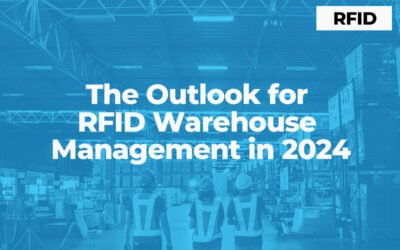In today’s marketplace, the pressure is on for companies to remain competitive, reducing cost to do so. You also need good physical asset management.

How competitive is your organization? In today’s marketplace, the pressure is on for companies to remain competitive, while reducing cost. Not only are companies encouraged to operate in an environment with reduced flexibility and margins, they need to do so with fewer employees and diminished resources. To help remain competitive, you also need good physical asset management.
What are Physical Assets?
Physical assets are the tangible items in your business. The items that provide value from their ability to sell or use in a business transaction. The physical asset can be anything from your company’s production equipment, product stock, property, tools, machines, office furniture, and even liquid funds. If it can be used in the business, sold by the business, or bartered for other assets, then it is considered a physical asset.
Why is Physical Asset Management Important?
To understand why physical asset management is important, you need to understand how the assets are used in the business. The business goal is to optimize the assets usability, and to get the most out of them before they are retired. Inventory needs to be observed to ensure it doesn’t expire before being sold. Equipment needs to be maintained and serviced so it doesn’t cause downtime when it breaks.
Physical asset management solutions provide techniques and processes that focus on preventing inefficiencies, while still helping your organization lower the total cost of asset ownership. When properly deployed, you will get a long-term advantage that not only impacts your bottom line but also the safety and reliability of all your physical assets.
What are the Greatest Challenges in Managing Physical Assets?
There are a variety of challenges to managing physical assets, but they can easily be overcome with some planning. The biggest challenge in any organization operating in the post-pandemic world, is to maintain and increase the effectiveness of the business while keeping costs to a minimum. Above all, provide exemplary customer satisfaction. Much of this can be done by reviewing and reevaluating processes that need an appropriate update.
Additional measures like workforce reductions, employee furloughing, and outsourcing of work only provide temporary relief for companies looking to meet financial goals. Without the proper maintenance, unnecessary and preventable breakdowns will continue to occur.
What are Some Key Issues in Physical Asset Management?
- Physical asset management starts at the asset’s conceptual design or purchase through usage to disposal. Within that lifecycle approach, maintenance is part of the physical asset management definition and needs to be included in order to ensure asset value.
- Physical asset management must provide you with accurate data so that the right decisions are made regarding the assets. Common sense and experience combined with data quality can prevent flawed decisions that could hurt the company.
- The right physical asset management software will help you collect and analyze data on your assets so you can make informed decisions. By tracking every detail of your physical assets from procurement to disposal, you can review the cost benefits of buying different brands compared with buying the same brand when replacement is needed.
- You also want to make sure that your physical asset management system can be utilized across the company in different departments, locations, and facilities. Everyone uses the same program with access to the same, real-time data. This can help reduce your capital and operating expenditures while providing real-time insights for the team.
Why is Physical Asset Management Necessary?
Imagine having to control your asset lifecycle management by hand. Every laptop, every computer in your company all entered in a spreadsheet with every detailed piece of information. Or even every piece of inventory in your warehouse. Assets will fall through the cracks. This is why a good process should be integrated across your business.
Good physical asset management software can help you achieve efficiency by:
- Allowing you to track and monitor every asset in your company in one central location
- Managing your assets from any location, especially if the package has a mobile component
- Identifying and managing any risk to assets so that you can minimize them immediately
- Providing information on any asset’s lifecycle
- Helping identify ghost assets that can be removed from the system
- Planning maintenance schedules for each asset so that there are no disruptions of service
- Giving you accurate, in-depth reports and audits that do not take hours to compile
- Freeing up resources that assets are currently using
- Allowing you to focus on the reliability of current resources
- Boosting your assets productivity
You can read more about physical asset management here.
Why Use a Physical Asset Management System?
Why should your company use an asset management system? You should use it to:
- See a faster return on your capital equipment investments
- Provide measurable improvement to your operating efficiency to stakeholders
- Lower costs by analyzing what assets are efficient and what assets are not
- Reduce the administrative burden of producing complex reports
- Provide higher compliance levels
- Manage your risks better
Apptricity’s Enterprise Asset Management Software application gives you a single, unified view of your asset and inventory management procedures. It also provides you with a cloud-based system with mobile applications featuring IoT integrations. This means it provides real-time updates of the end-to-end asset management process. Plus, each application can be used separately, or in conjunction with the others to scale with your needs.
Let us help you with your asset lifecycle management needs. Contact us today for a demo.


